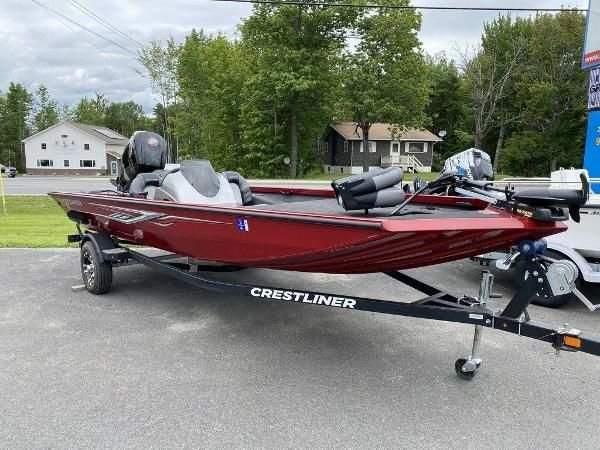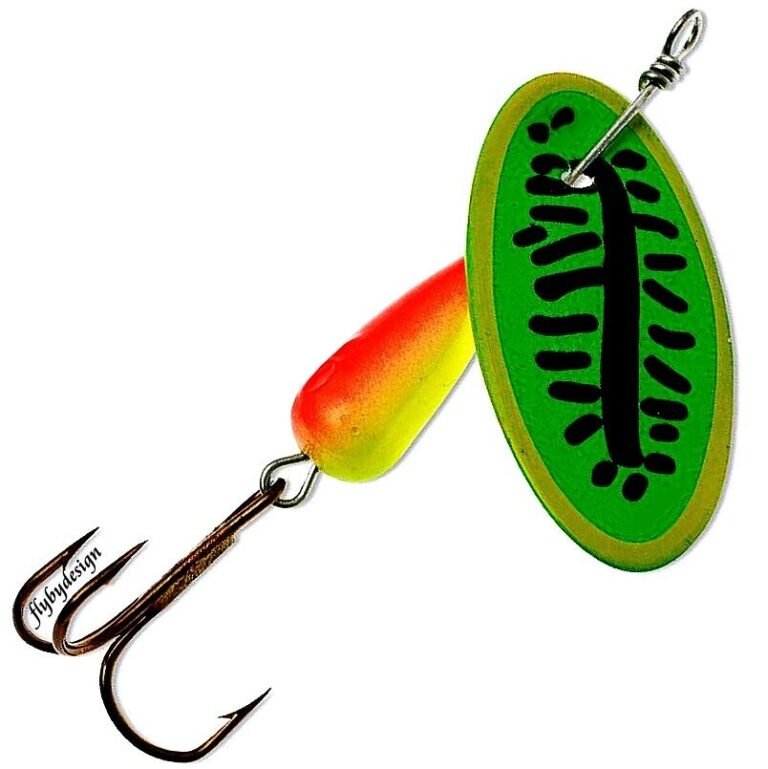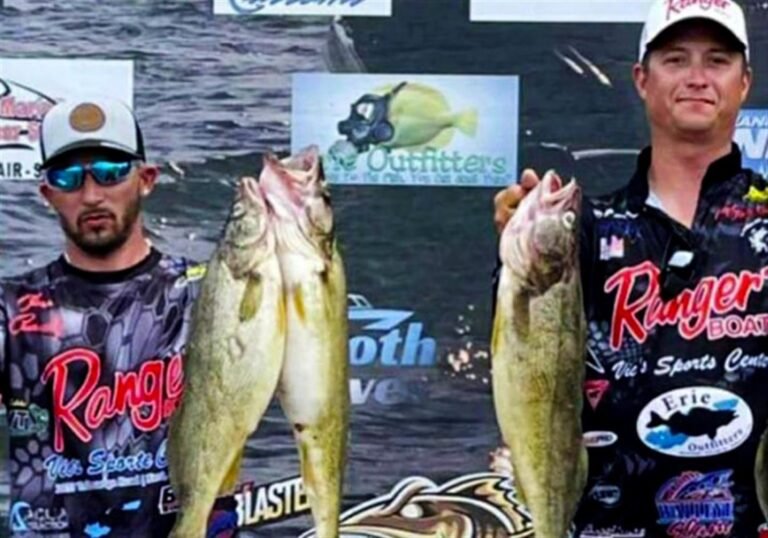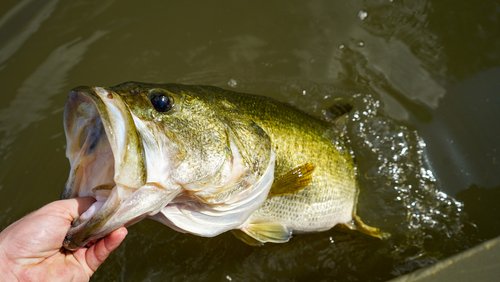There is an undeniable rush that courses through our veins when we feel our line suddenly tighten. The rod bends under the weight of a trophy-sized bass. If you want to increase your ‘luck’, read on for our bass fishing secrets.
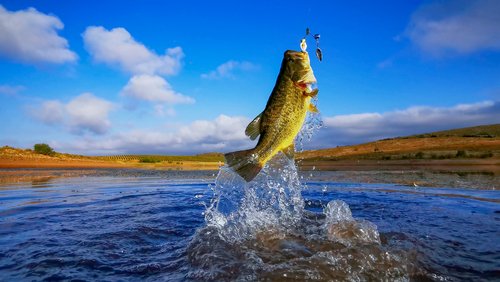
The adrenaline surges as you struggle to keep your footing while reeling in a powerful adversary. Yet, beyond this exhilaration lies something much deeper: an indescribable connection between humans and nature.
When you land a trophy catch, it’s not just about conquering a creature; it is about immersing yourself in the wonders of our natural world. You become part of something greater—an observer granted access to glimpses of beauty hidden beneath rippling waters.
The Secrets and Techniques for Success
In any pursuit worth mastering, there exist secrets passed down through generations—an amalgamation of experience and wisdom that distinguishes novices from experts. Bass fishing is no exception. While luck and chance may play a role in an angler’s success, true mastery lies in understanding the secrets and techniques that can tip the scales in your favor.
By delving into the intricacies of bass behavior, selecting the right equipment, and acquiring a diverse arsenal of fishing techniques, anglers gain an edge that separates them from those merely casting lines. The secrets that lie within the world of bass fishing offer not only mastery but also a gateway to unlocking thrilling adventures and unforgettable memories on every outing.
Understanding Bass Behavior
When delving into the intriguing world of bass fishing, it becomes imperative to comprehend the diverse species that inhabit our waters. The most sought-after bass species include the largemouth bass, smallmouth bass, and spotted bass. Each species possesses unique characteristics and preferences, making it crucial for anglers to understand their distinct behaviors.
Largemouth bass, often revered as the king of freshwater game fish, thrive in a variety of habitats such as lakes, ponds, rivers, and reservoirs throughout North America. With their iconic large mouths capable of engulfing substantial prey, they tend to prefer areas with abundant vegetation or structure that provides cover from predators and ambush points for unsuspecting prey.
Smallmouth bass are more commonly found in clear streams or lakes with rocky bottoms and cooler water temperatures. They exhibit a more aggressive nature when compared to their largemouth counterparts.
Smallmouths are known for their acrobatic fights and preference for areas with boulders, submerged logs, or rocky banks where they can lurk in wait for prey. Spotted bass share similarities with both largemouth and smallmouth species but have a distinct preference for deeper water structures such as ledges or drop-offs.
These elusive creatures thrive in reservoirs and rivers across the United States. Understanding these three primary species’ habitats is paramount when seeking out trophy catches.
Factors Influencing Bass Behavior
Bass behavior is profoundly influenced by various factors that can ultimately dictate their feeding patterns and movement throughout different seasons. One crucial factor to consider is water temperature. As ectothermic creatures, bass rely on external conditions to regulate their body temperature; therefore, they exhibit different behaviors at varying temperatures.
During colder months when water temperatures drop, bass become less active and tend to congregate in deeper waters where temperatures remain relatively stable. Their metabolism slows down, and their feeding becomes less frequent.
However, as spring arrives and the water begins to warm, bass become more active and venture toward shallower areas in search of food and suitable spawning grounds. Weather conditions also play a significant role in bass behavior.
Changes in barometric pressure, cloud cover, wind intensity, and rainfall can all impact their feeding patterns. For instance, during overcast days or periods of low-pressure systems preceding storms, bass may venture closer to the surface to feed actively.
Conversely, high-pressure systems or bright sunny days may drive them deeper or into heavy cover. Understanding seasonal patterns is another crucial aspect that can unlock the secret to landing trophy catches consistently.
Bass follow predictable migration routes as they move from wintering areas to pre-spawn staging locations and eventually spawning grounds before transitioning back towards deeper water during post-spawn periods. Recognizing these patterns allows anglers to strategize effectively and target specific areas when pursuing trophy-sized bass.
Insight into how understanding bass behavior leads to successful fishing trips reveals that mastering the art of angling extends beyond luck or chance encounters with fish. By observing their preferred habitats, adapting techniques according to changing weather conditions, considering water temperature variations throughout the year, and recognizing seasonal patterns, anglers can significantly increase their chances of hooking majestic trophy-sized bass that will undoubtedly leave a lasting impression on both themselves and those lucky enough to witness such an accomplishment firsthand.
Choosing the Right Equipment
Detailed explanation of different types of fishing rods, reels, lines, and lures suitable for bass fishing
When it comes to bass fishing, having the right equipment can make a world of difference in your chances of landing trophy catches. Let’s delve into the various types of gear that are essential for a successful bass angler. 1. Fishing Rods: Bass fishing rods come in different lengths, materials, and actions.
Longer rods (7 to 8 feet) provide greater casting distance and control over the fish during fights. Graphite or carbon fiber rods are preferred due to their sensitivity and lightweight construction.
The action refers to how the rod bends when pressure is applied; fast action allows for quick hook sets while moderate action provides more flexibility. Consider your fishing style and casting preferences when choosing a rod.
2. Reels: There are two main types of reels used in bass fishing – spinning reels and baitcasting reels. Spinning reels are easier to use for beginners as they require less skill to cast accurately.
Baitcasting reels offer greater control and accuracy once mastered but require practice to avoid backlash (tangled line). Consider the line capacity, gear ratio (speed of retrieval), and drag system when selecting a reel.
3. Fishing Lines: The choice of fishing line depends on various factors such as water clarity, cover conditions, and target species size. Monofilament lines offer versatility with good knot strength and shock absorption properties but have lower visibility underwater compared to braided lines.
Fluorocarbon lines are virtually invisible underwater but can be stiffer compared to other options. 4. Lures: Bass fishermen have an array of lure options at their disposal depending on conditions and target species preferences.
Some popular choices include crankbaits (diving plugs), spinnerbaits (metal blades), soft plastics (worms or creature baits), and topwater lures (floating baits that create surface disturbance). Matching the lure to the prevailing conditions and imitating the bass’s preferred prey can significantly increase your chances of success.
Tips on selecting the appropriate equipment based on fishing location, water conditions, and target species
Now that we have covered the types of gear used in bass fishing, it’s important to understand how to select the appropriate equipment based on specific factors. Let’s explore some tips for making informed choices:
1. Fishing Location: Different fishing locations require different gear. If you’re planning to fish in open water or vast reservoirs, longer rods and reels with greater line capacity are beneficial for casting distance.
On the other hand, if you’re targeting bass in dense cover or vegetation, shorter rods paired with baitcasting reels offer better accuracy and control. 2. Water Conditions: Water clarity plays a vital role in lure selection and line choice.
In clear water, use lighter line weights (8-12 lb test) with fluorocarbon or mono lines to reduce visibility. In murky or stained water, consider using braided lines combined with lures that create vibrations or sound.
Adapt your lure colors to match the natural prey available in your fishing area. 3. Target Species: Different species of bass may exhibit different behaviors and feeding patterns.
Largemouth bass tend to be more aggressive compared to smallmouth bass, so using lures that generate commotion can be effective for largemouths. Smallmouth bass may prefer finesse techniques like drop shots or tubes when they are less active.
Discussion on how using the right gear can significantly impact your chances of landing trophy catches
Using the right gear is not just about comfort; it directly impacts your ability to land trophy catches when targeting bass. Here’s why choosing appropriate equipment is crucial: 1. Sensitivity: Quality rods made from graphite or carbon fiber enhance sensitivity, allowing you to detect subtle strikes and changes in bottom structure.
This increased sensitivity enables you to react quickly and set the hook at the right moment, enhancing your chances of landing trophy-sized bass. 2. Casting Accuracy: Baitcasting reels paired with shorter rods provide greater control and accuracy during casts, especially when aiming for specific targets such as submerged structures or pockets in vegetation.
Accurate casting allows you to present your lures precisely where the fish are hiding, maximizing your chances of enticing strikes. 3. Strength and Control: Choosing fishing lines with appropriate strength ensures that you can handle the power of trophy-sized bass without risking line breaks or excessive stretching during fights.
Additionally, selecting reels with smooth drag systems allows for controlled battles, reducing the risk of losing a hooked fish due to gear failure. Selecting the right equipment based on fishing location, water conditions, and target species is paramount for success in bass fishing.
The combination of suitable rods, reels, lines, and lures maximizes sensitivity, casting accuracy, and overall control over larger fish. By understanding how each piece of gear contributes to your angling arsenal and tailoring them to specific circumstances, you can significantly increase your chances of landing those trophy-sized bass you’ve been dreaming of.
Mastering Different Fishing Techniques
Deep Diving: Exploring techniques like deep crankbaits and Carolina rigs for targeting deep-water bass
To truly become a master angler, one must delve into the realm of deep diving techniques. Deep crankbaits and Carolina rigs are two tried-and-true methods for luring those elusive trophy-sized bass lurking in the depths.
But when should these techniques be employed, and where will they yield the best results? When it comes to deep diving, timing is crucial.
During colder months or early mornings when bass tend to venture towards deeper waters seeking warmth or sustenance, this is your opportunity. Optimal conditions include water temperatures below 60°F (15°C) and calm weather with minimal wind disturbance.
In terms of locations, seek out structures like drop-offs, submerged points, ledges, or creek channels adjacent to shallow regions where bass might retreat during feeding periods. To effectively entice trophy-sized bass using deep diving techniques, mastering the art of retrieval is paramount.
Start by casting your lure near the targeted structure or drop-off and allow it to sink to the desired depth before beginning a slow retrieve. Vary your retrieval speed intermittently by pausing briefly or applying quick bursts of speed to imitate an injured prey struggling in the water column – this erratic action often triggers aggressive strikes from opportunistic predators.
Topwater Action: Unveiling secrets behind topwater lures like poppers, buzzbaits, and frogs
When it comes to thrill-seeking angling experiences that can produce heart-pounding strikes from monster bass breaking through the surface, topwater action reigns supreme. The secrets behind successful topwater fishing lie not only in lure selection but also in understanding optimal times and techniques for creating realistic presentations that trigger aggressive strikes.
Timing plays a crucial role in maximizing your chances of success with topwater lures. Early mornings and late evenings are prime time for topwater action when bass tend to be more active and willing to strike at surface-dwelling prey.
Additionally, overcast days or low light conditions can create an illusion of safety for bass, making them more prone to attacking a tempting topwater lure. Creating realistic presentations with topwater lures requires finesse and attention to detail.
Poppers, buzzbaits, and frogs are all effective options that mimic natural movements and stimulate the predatory instincts of trophy-sized bass. Experiment with different retrieval techniques such as gentle pops, steady retrieves with occasional pauses, or erratic twitching motions to imitate injured or vulnerable prey struggling near the surface.
Flipping & Pitching: In-depth exploration of flipping and pitching techniques for targeting heavy cover
For those who dare to venture into dense vegetation or structures where trophy-sized bass love to hide, flipping and pitching techniques are invaluable skills worth mastering. These specialized methods require precise rod positioning, proper lure selection, accuracy in tight spaces, as well as the ability to effectively read cover. Flipping involves presenting a lure delicately by swinging it underhand using your wrist while maintaining control over line tension throughout the cast.
This technique is ideal for targeting specific spots within heavy cover like submerged logs, boat docks, or thick weed mats where big bass often seek refuge. Pitching, on the other hand, entails using an overhand motion with higher trajectory casts while aiming at larger areas of cover such as laydowns or brush piles.
Selecting appropriate lures plays a significant role in successful flipping and pitching endeavors. Texas-rigged soft plastics like creature baits or jigs paired with trailers are popular choices due to their weedless nature and ability to penetrate thick vegetation without getting snagged easily.
Accuracy is crucial when presenting these lures close to potential hiding spots – practice your casts diligently until you can consistently place your bait within inches of the desired target. Effectively reading cover is an essential skill that allows anglers to locate trophy-sized bass hiding amidst dense vegetation or structures.
Look for signs of life such as baitfish activity, disturbances on the surface, or even subtle water movement indicating the presence of hidden predators. Patience and attentiveness are key when observing cover – study every nook and cranny, as big bass often choose the most inconspicuous spots to ambush their prey.
Conclusion
In the pursuit of landing trophy bass catches, mastering a diverse range of fishing techniques is crucial. Understanding when and where to employ deep diving techniques like crankbaits and Carolina rigs can increase your chances of targeting elusive deep-water giants.
Exploring secrets behind topwater lures, such as poppers, buzzbaits, and frogs, helps create realistic presentations that trigger aggressive strikes during optimal times. Developing proficiency in flipping and pitching techniques for heavy cover ensures you can navigate tight spaces with precision while effectively locating trophy-sized bass hiding amidst vegetation or structures.
By honing these techniques and continuously expanding your knowledge as an angler, you’ll not only improve your chances of landing impressive catches but also deepen your connection with nature’s aquatic wonders. Remember that each fishing trip offers unique learning opportunities and experiences – embrace them with enthusiasm and an unwavering passion for the sport.

